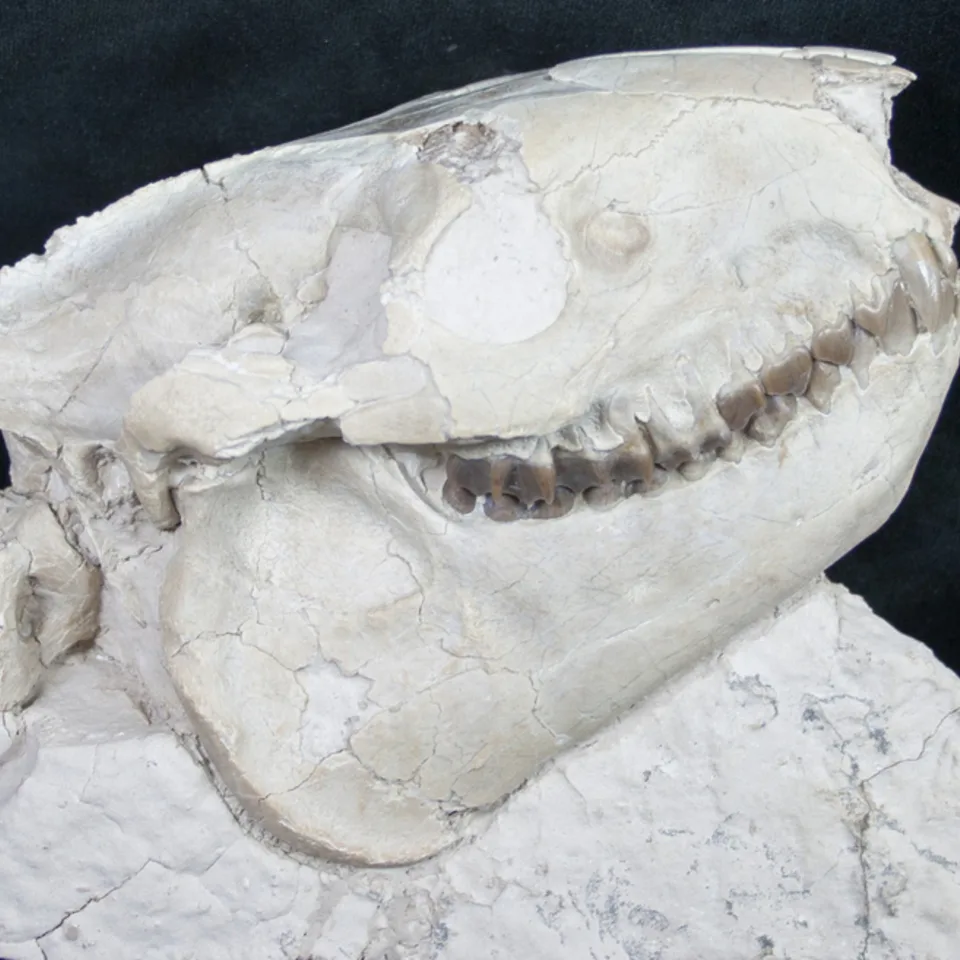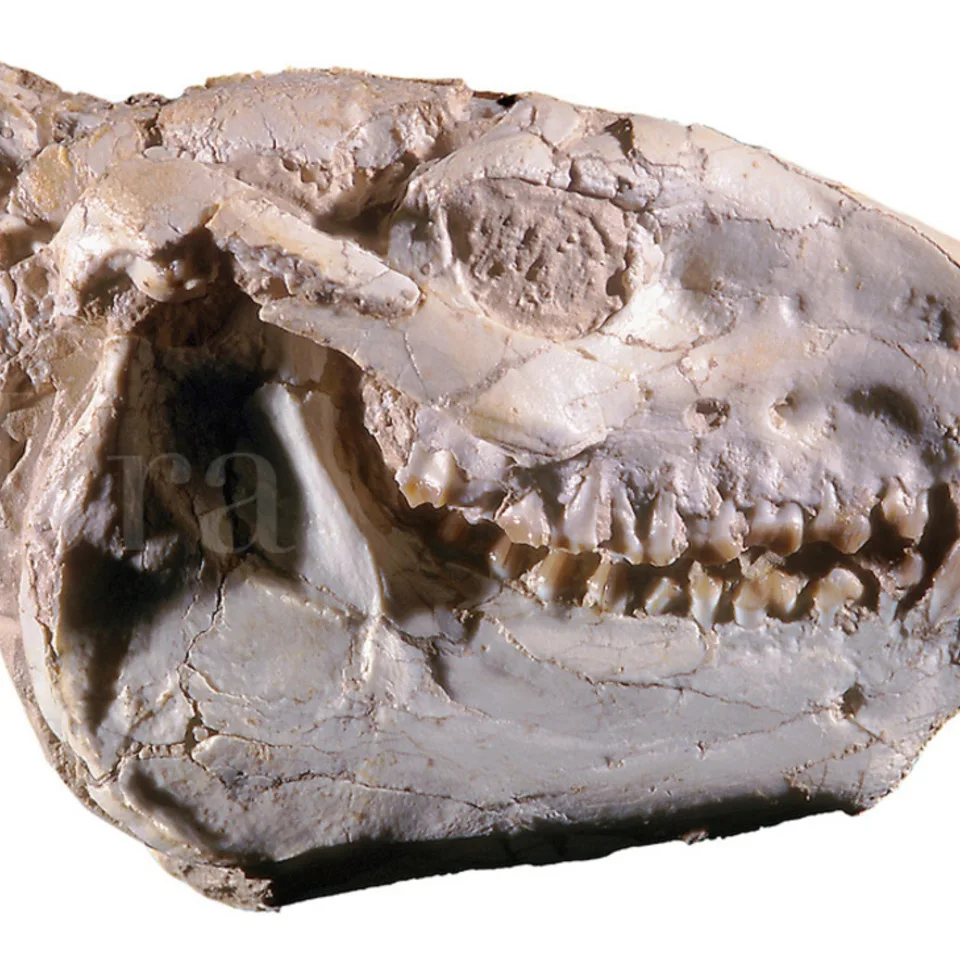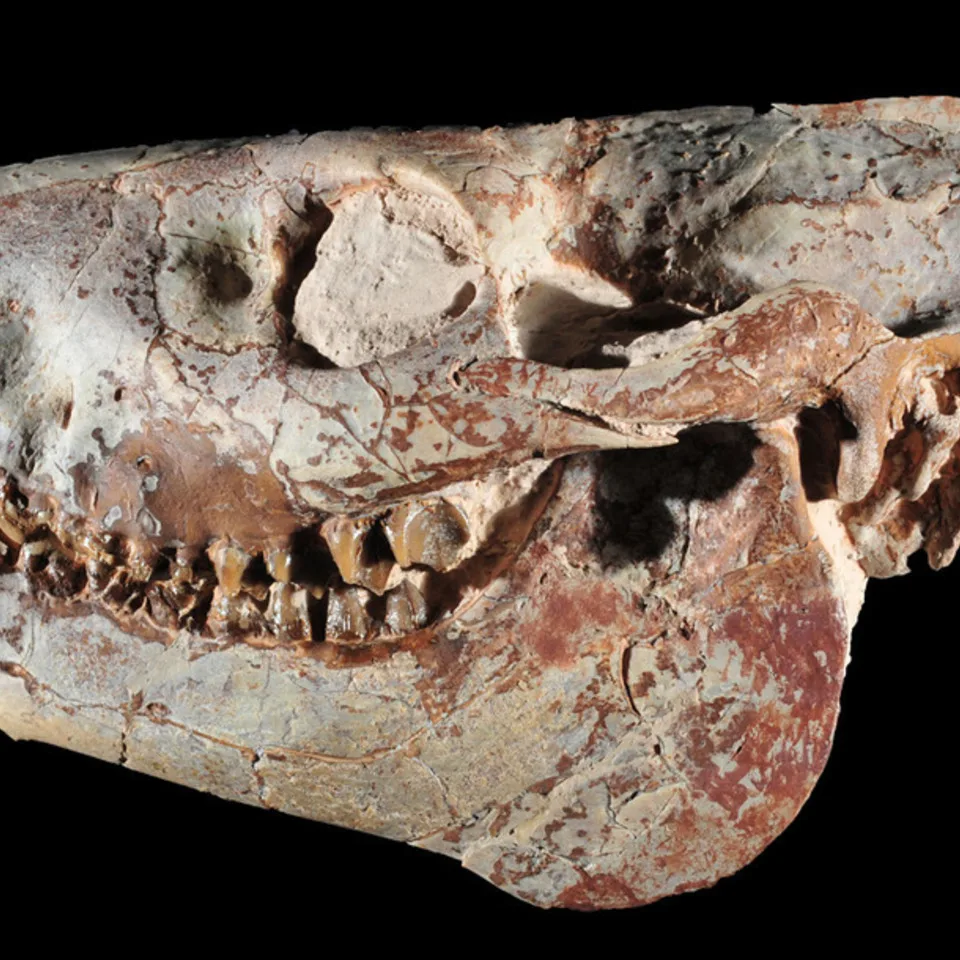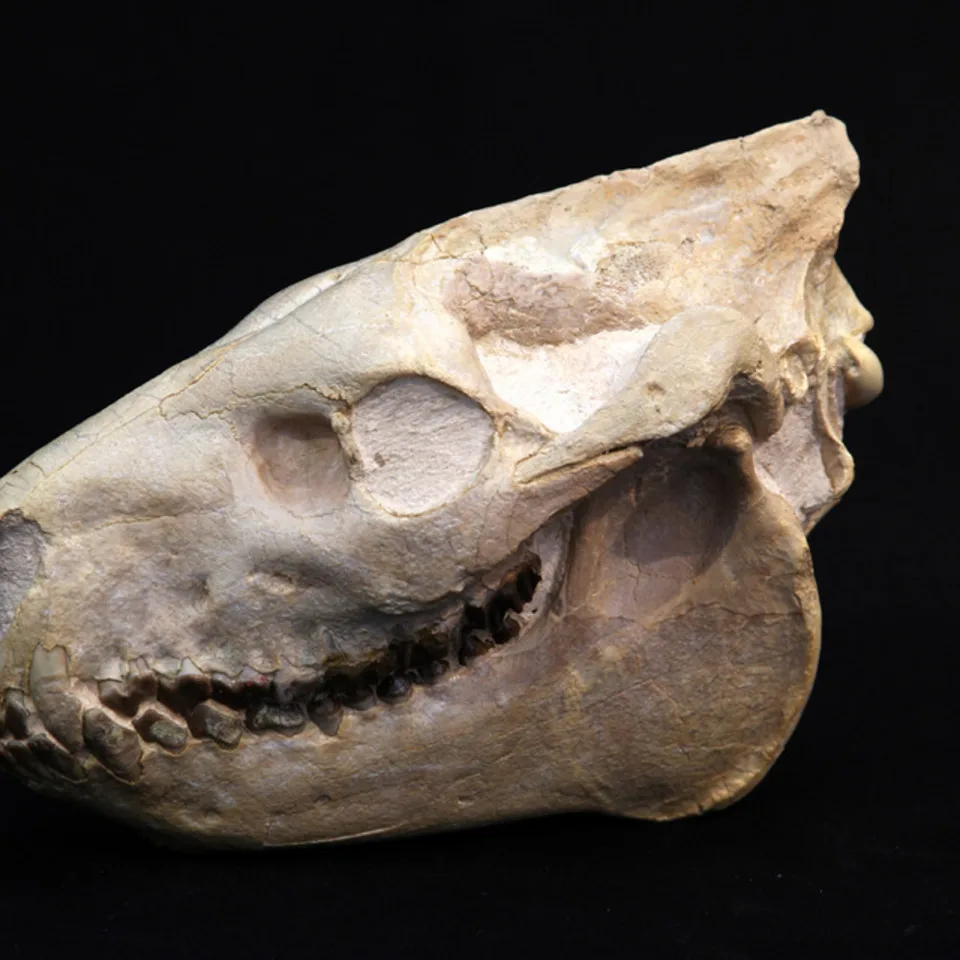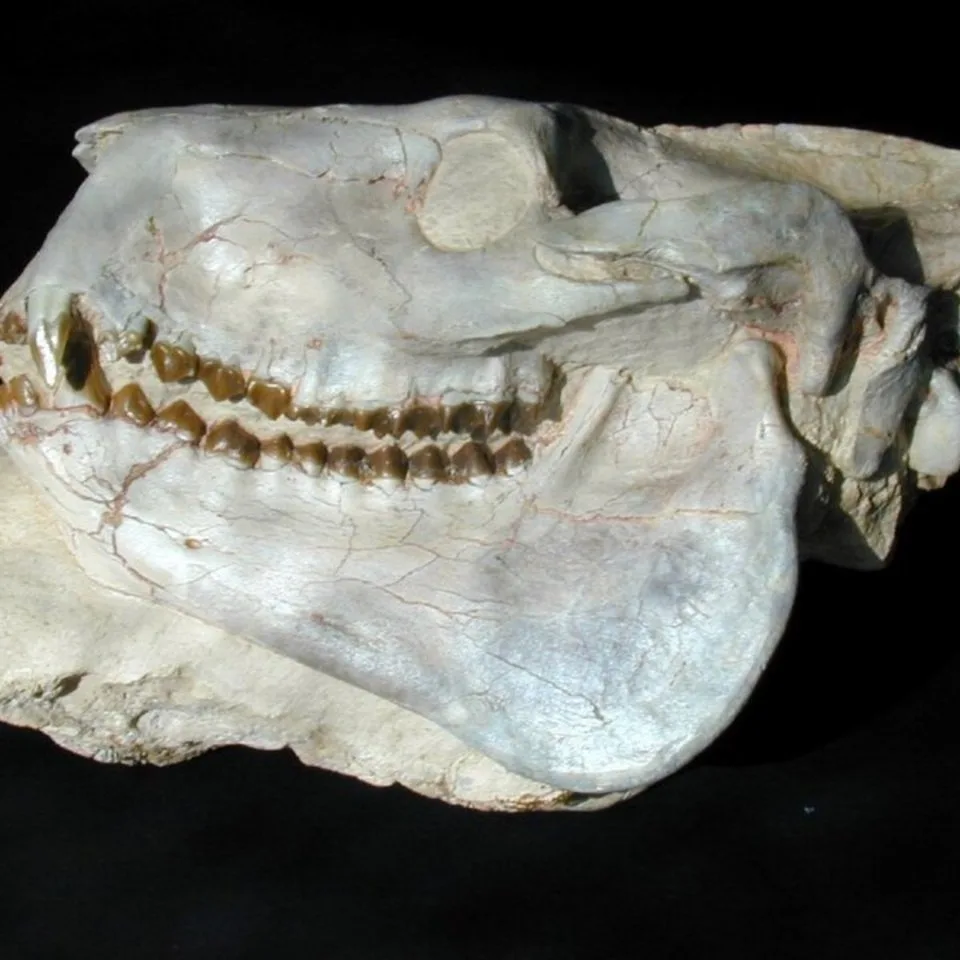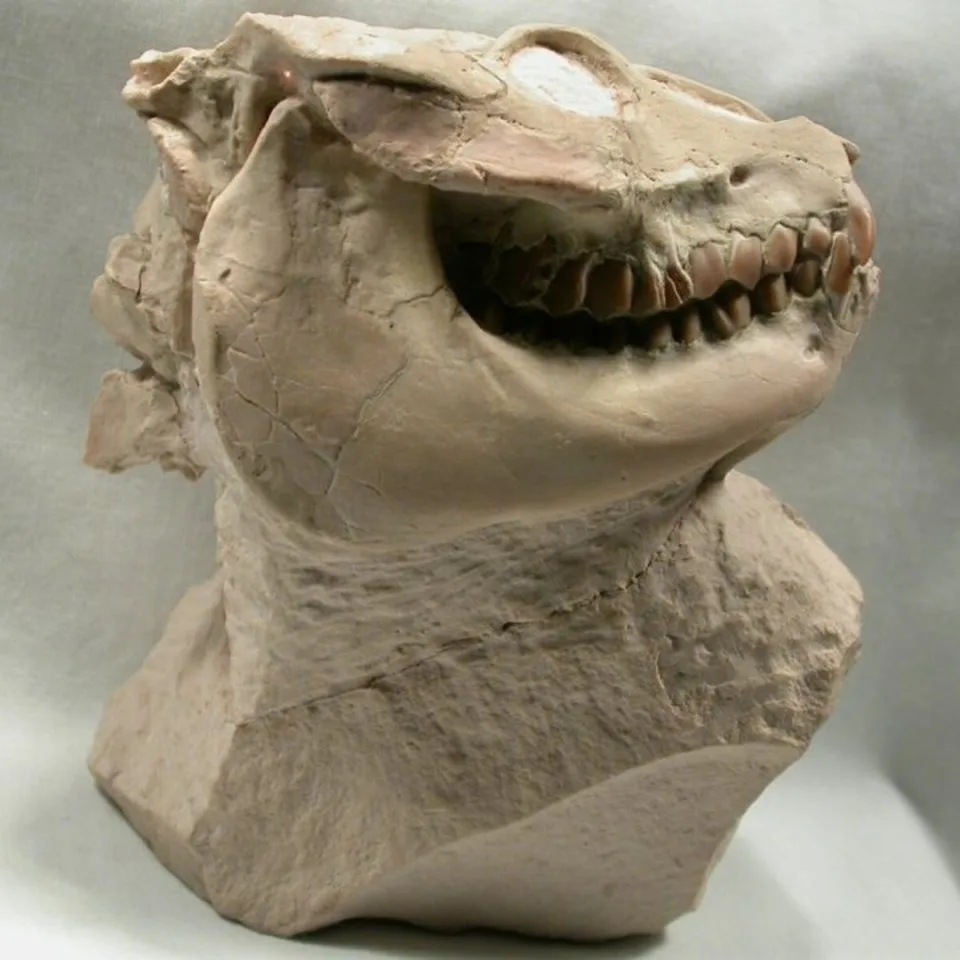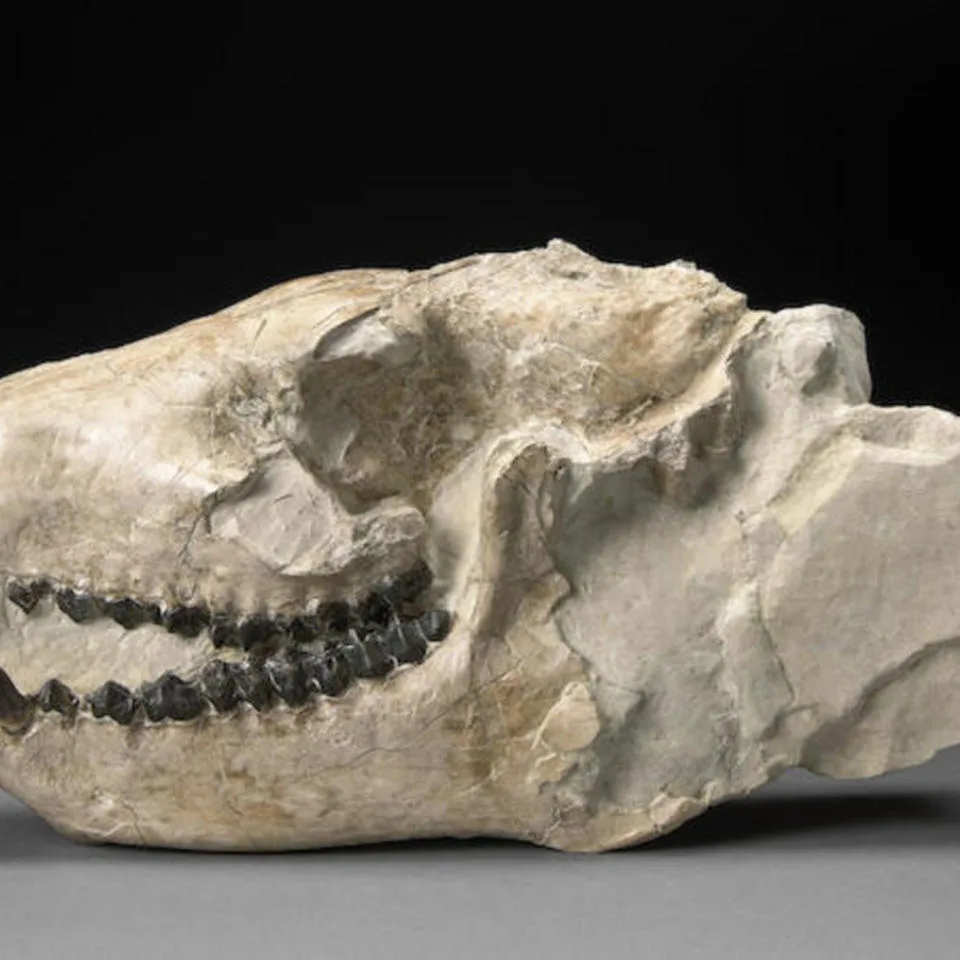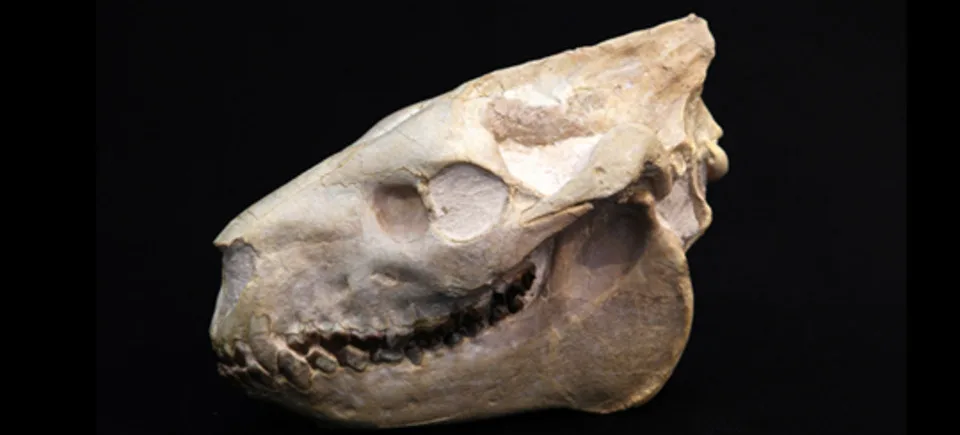Oreodont
Oreodonts are extinct Artiodactylids (even-toed mammals) most closely related to camels and pigs, with no close relatives living today. All are herbivorous, browsing on a diet of leaves and young shoots.
Although tempting to think of them as feeding on “grass”, true grasses did not appear until the late Oligocene, evolving and expanding widely during the Miocene as savannahs appeared during the cooling and drying of the that epoch. Oreodonts fed on different types of vegetation than many modern artiodactylids do and therefore occupied an ecologically different niche than many living ungulates.
True grazers such as equids did not start to appear until the middle Miocene when grasses became the dominant type of low forage. Found only in North America, oreodonts would eventually rival the large and diverse extant populations of modern bovid artiodactylids in Africa (antelopes, wildebeest, and buffalo) or the equally diverse populations of deer and goats of Asia. Other than dentition and diet, the more derived oreodonts of the Family Merycoidodontidae could easily be compared in diversity with the antelopes of Africa or the deer and goats of Asia.
Undoubtedly oreodonts filled all available dietary niches, much as modern artiodactylids do, oreodont specialization limited perhaps by their relatively small size in comparison to most living artiodactylids. All oreodonts possess more hypsodont, fully selenodont molars and a lacrimal fossa in front of the eye.
Some of the later oreodonts had tapir-like skulls, suggesting the presence of a mobile lip or short proboscis. Put simply, their teeth are designed for cutting and chopping leaves, with large lateral projections extending perpendicularly in the last two upper molars (see picture below) further assist in this process. Such projections are not present in modern artiodactylid teeth.
Oreodonts survived from the late Eocene through the early Miocene and are extremely abundant in some formations. Regardless of their abundance, however, all but one member of the Agriochoeridae failed to survive past the Chadronian NALMA. Only the largest merydoidodontid oreodonts, apparently better adapted to feeding on tougher vegetation, survived until the early Miocene. Then increased aridity and cooling favored the evolution of grasses, thus eliminating the last of this primitive browsing superfamily that failed to adapt to climatic conditions that favored the evolution of true grazers like the horse.
